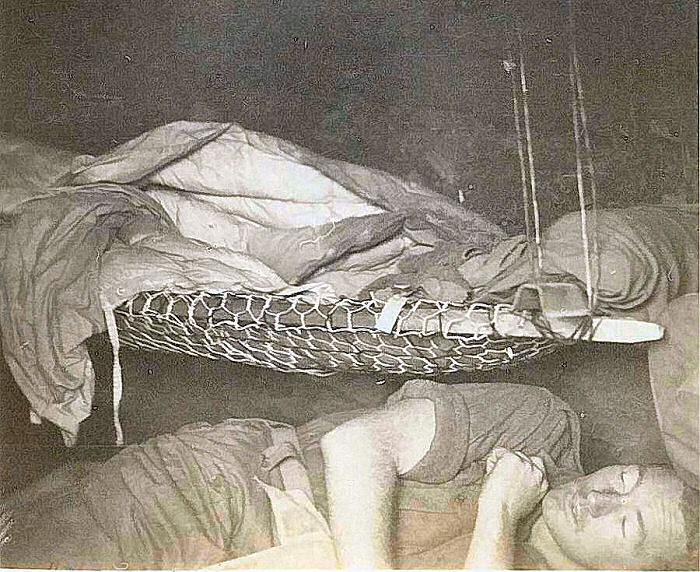 The interior of one of the many bunkers I have lived in.
The interior of one of the many bunkers I have lived in.Note my flash swinging bed, rigged around two piquets. "Killer Dawson" "355" underneath. 1953. This was a good class bunker for 355 area, Charlie never gave us thechance to build anything substantial. Each morning at the first sign offresh earth tossed around, he would shell and mortar the crap out of it.Note the fancy swinging bed made from wiring piquets, signal wire and somesort of mesh. This art-work was suspended from the logs which made up thebottom layer of the overhead cover of the bunker.
The majority of foxholes or bunkers were very basic, a hole dug deepenough to at least crouch inside. Bunks cut into the walls, there weresometimes three men to a hole in the front-line positions. The roof wasmade of logs, piquets, several layers of filled sandbags, old ponchos ortarpaulin if obtainable for water proofing. This was topped by a foot ormore of soil and perhaps shrubs. Rocks were avoided in the topping as itwas believed they caused more damage if hit by incoming mortars or shells. The finished product was at ground level on the forward positions, to makethem less obvious to Charlie. Those at the rear didn't need to go to somuch trouble as they were generally out of sight. Thus you had twodifferent types of living quarters on the one hill. |
|
|
